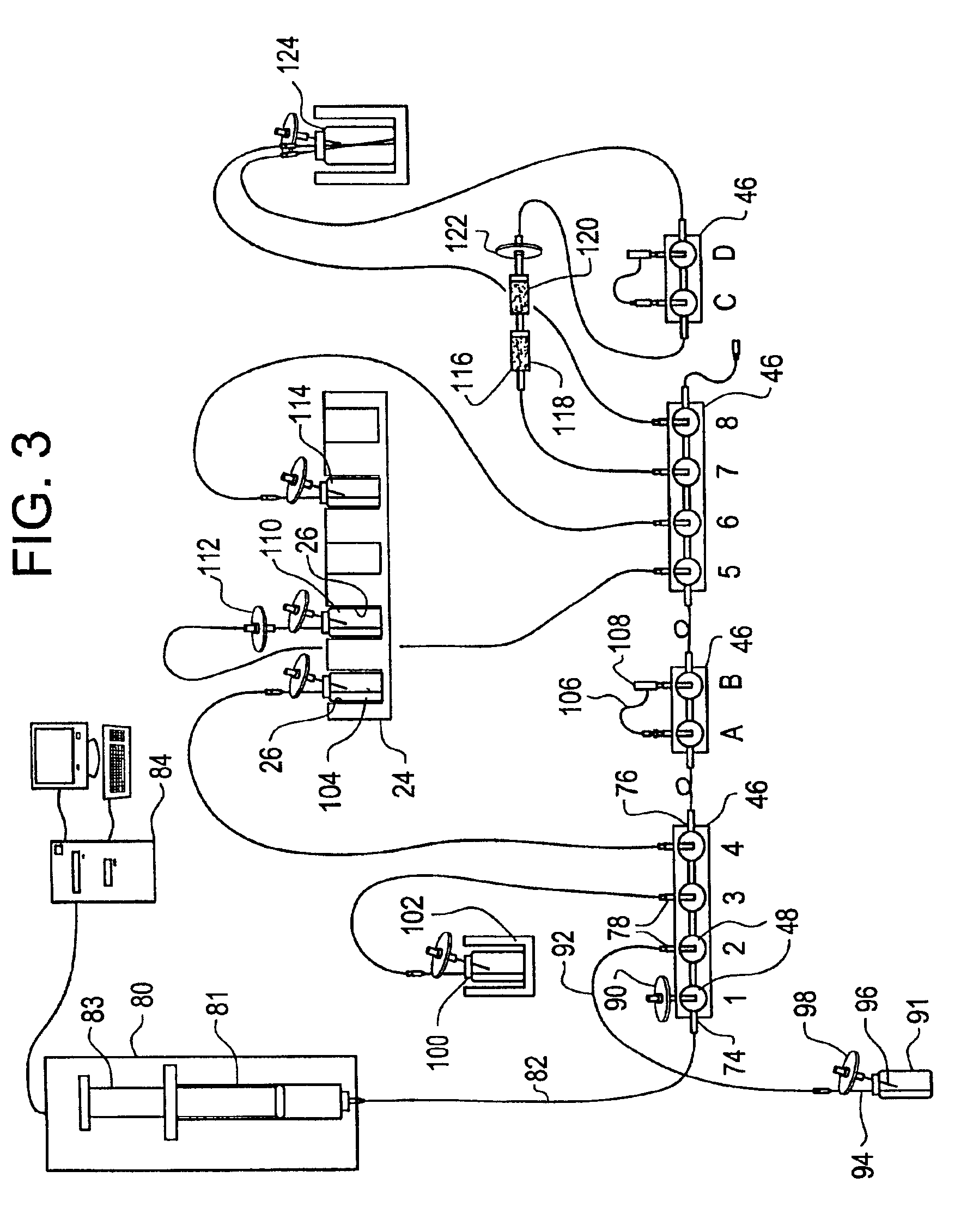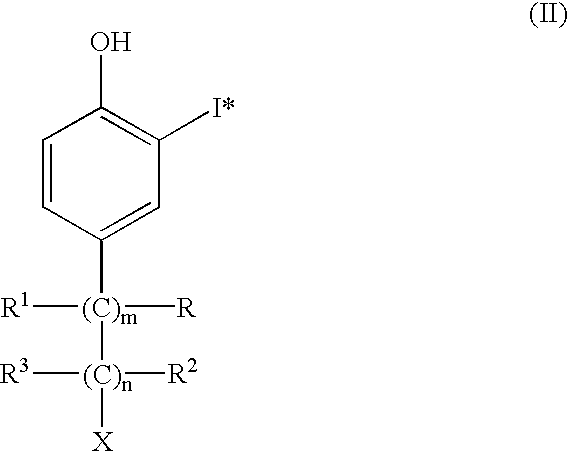Radioiodinated sulfonated phenols and process therefore
a technology of iodine sulfonate and phenol, applied in the field of radioactive fluid, can solve the problems of recurrence of cancer, difficult implantation itself, high cost, etc., and achieve the effect of high yield and purity
- Summary
- Abstract
- Description
- Claims
- Application Information
AI Technical Summary
Benefits of technology
Problems solved by technology
Method used
Image
Examples
example 1
A 1 cm×10 cm paper strip was spotted with 2 μL of 131I sodium iodide solution at the center of the second cm section. The strip was placed in a container with a small volume of 0.1M silver nitrate solution such that about the first 50 mm of the strip was below the liquid level. The strip was left in place until the liquid wicked to the top of the paper strip. The strip was then cut into 1 cm sections and each section counted on a thallium-drifted sodium iodide detector coupled to a multi-channel analyzer.
IODO-GEN® (2 mg, Pierce Chemical Company) was dissolved in 1 mL of chloroform and the solvent was evaporated by passing an argon stream into the vial while rotating it. The solid IODO-GEN® was thus deposited as a film on the sides of the vial. A solution containing 25 mg of HBS in HEPES buffer (pH=7.5) and tracer amounts of radioactive sodium iodide (131I) was added to the vial. After 30 minutes, a 6 μL sample of this solution was spotted on an 10 cm paper strip and eluted with 0.1N...
example 2
Samples of radioactive (131I) NaI and iodinated HBS (131I-HBS), prepared as described in Example 1, were analyzed by paper electrophoresis. Thus 2-10 μL samples were spotted at the center of 33 cm paper strips (Whatman 1 Chromatography Paper) after wetting with an electrophoresis buffer at pH 8.6. A potential of 500 V was applied for 15 minutes. The strips were cut into 1 cm sections and counted as in Example 1. The results show the radioactivity in the sodium iodide sample migrating as an anion 7 to 8 cm. The I-HBS migrated 4 cm. A mixture of the two solutions showed that separation of NaI from I-HBS was possible.
example 3
Two mg of IODO-GEN® dissolved in one mL of chloroform was placed in a glass vial. The vial was rotated at an angle while allowing the solvent to evaporate and deposit the reagent as a film on the sides of the vial. A quantity of 25 mg of HBS was weighed into a second vial. To the second vial was added one mL of a solution containing 0.28 mg of carrier Na127I and tracer amounts of radioactive Na131I plus 5 mL of HEPES buffer (0.02 M, pH=7.5). The contents of the second vial was transferred to the first (IODO-GEN®) vial using a pipette. The paper chromatography method described in Example 1 was used to analyze the solution at 5, 8, 12, and 16 minutes after introduction into the IODO-GEN® vial. The percentage of the activity bound to HBS (moving with the solvent front) was 64, 84, 94 and 94%, respectively. In other words, there was about 6% unbound iodide. After 20 minutes, the contents of the IODO-GEN® vial were transferred into a vial containing one mg of sodium metabisulfite. Analys...
PUM
| Property | Measurement | Unit |
|---|---|---|
| Fraction | aaaaa | aaaaa |
| Fraction | aaaaa | aaaaa |
| Molar density | aaaaa | aaaaa |
Abstract
Description
Claims
Application Information
 Login to View More
Login to View More - R&D
- Intellectual Property
- Life Sciences
- Materials
- Tech Scout
- Unparalleled Data Quality
- Higher Quality Content
- 60% Fewer Hallucinations
Browse by: Latest US Patents, China's latest patents, Technical Efficacy Thesaurus, Application Domain, Technology Topic, Popular Technical Reports.
© 2025 PatSnap. All rights reserved.Legal|Privacy policy|Modern Slavery Act Transparency Statement|Sitemap|About US| Contact US: help@patsnap.com



